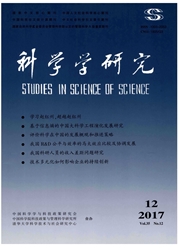

 中文摘要:
中文摘要:
利用网络DEA方法测算了中国1996-2014年省域"科技-金融"系统效率,在分析其时空演进特征的基础上,构建两阶段GMM模型和空间杜宾模型,实证检验了制度环境、基础设施对"科技-金融"系统效率改善的本地效应和空间溢出效应。研究发现,中国整体"科技-金融"系统效率呈上升趋势,且具有显著正向空间关联;不考虑空间因素时,制度环境、基础设施水平的提升均有利于本地"科技-金融"系统效率的改善;考虑空间因素后,基础设施的直接效应与空间溢出依然显著为正,但制度环境的直接效应不显著,且出现显著的负向空间溢出效应,对此的解释是不同区域制度环境水平存在较大差异,导致了创新要素在区域间的单向流动,不利于落后地区的"科技-金融"系统效率提升。
 英文摘要:
英文摘要:
Based on the Network-DEA model,this paper figures out each province's"Technology-Finance"system efficiency from1996 to 2014. After analyzing the features of the time dimension and space dimension,we establish the two-step GMM model to test the system environment and infrastructure's local effects and also set the spatial Durbin model to test the spatial spillover effects. The results show that from 1996 to 2014,the overall efficiency is significantly arising and highly spatial dependent. The system environment and infrastructure can both promote the efficiency when not considering the spatial factors. However,after adding the spatial factor into the model,the results note that the direct and spillover effects of infrastructure are still significantly positive,while the direct effect of system environment is not significant and the spillover effect is significantly negative. This result of system environment may caused by the regional imbalance development.
 同期刊论文项目
同期刊论文项目
 同项目期刊论文
同项目期刊论文
 期刊信息
期刊信息
